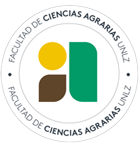Actividad antifúngica de bioinsumos de origen botánico sobre Botrytis cinerea Whetzel Antifungal activity of bioinputs of botanical origin of Botrytis cinerea Whetzel
Resumen
Resumen: El moho gris causado por Botrytis cinerea es una de las enfermedades fúngicas más destructivas que afecta a un amplio rango de hospedantes. La utilización de fungicidas de síntesis química ha generado problemas de resistencia y su uso indiscriminado tiene efectos negativos sobre la salud humana y el medio ambiente. Ante esta situación problemática se observa un interés creciente por el estudio y uso de sustancias antifúngicas de origen vegetal consideradas seguras. En este contexto se realizó el presente trabajo con el objetivo de evaluar in vitro el efecto de tres bioinsumos de origen botánico (Origanum vulgare L., Lavandula officinalis L. y Equisetum giganteum L.) sobre el crecimiento y desarrollo de B. cinerea. Para lo cual se sembraron esclerocios y suspensiones de conidios de B. cinerea en placas adicionadas con los bioinsumos mencionados. La medición del diámetro de colonias y la observación de las estructuras fúngicas permitió determinar que los tres bionsumos estimulan el desarrollo micelial de colonias desarrolladas a partir de esclerocios e inhiben la formación de conidios y esclerocios del patógeno. Por consiguiente, inhiben el principal mecanismo de diseminación (conidios) y sobrevivencia del patógeno (esclerocios).
Palabras-clave: Bioinsumos; Moho gris; Orégano; Lavanda; Equisetum.
Abstract: Gray mold caused by Botrytis cinerea is one of the most destructive fungal diseases that affects a wide range of hosts. The use of chemically synthesized fungicides has generated resistance problems and their indiscriminate use has negative effects on human health and the environment. Given this problematic situation, there is a growing interest in the study and use of antifungal substances of plant origin considered safe. In this context, the present work was carried out with the objective of evaluating in vitro the effect of three bioinputs of botanical origin (Origanum vulgare L., Lavandula officinalis L. and Equisetum giganteum L.) on the growth and development of B. cinerea. For which sclerotia and suspensions of conidia of B. cinerea were sown on plates added with the aforementioned bioinputs. The measurement of the diameter of colonies and the observation of fungal structures allowed us to determine that the three bioinsumments stimulate the mycelial development of colonies developed from sclerotia and inhibit the formation of conidia and sclerotia of the pathogen. Consequently, they inhibit the main mechanism of dissemination (conidia) and survival of the pathogen (sclerotia).
Keywords: Bioinputs; Gray mold; Marjoram; Lavender; Equisetum
Texto completo:
PDFEnlaces de Referencia
- Por el momento, no existen enlaces de referencia

This work is licensed under a Creative Commons Attribution-NonCommercial 4.0 International License.
La Revista Científica y Técnica Agropecuaria, Agroindustrial y Ambiental es una revista en formato digital fundada en el año 2021. Anteriormente denominada Revista de Divulgación Técnica, Agropecuaria, Agroindustrial y Ambiental. Se publican tres números al año en los meses de junio, octubre y febrero.
Órgano Editor: Secretaría de Investigación, Facultad de Ciencias Agrarias, Universidad Nacional de Lomas de Zamora
E mail: revistafca@agrarias.unlz.edu.ar
Teléfono: +54 11 2078 -0500
Dirección: Camino de Cintura y Juan XXIII, Lomas de Zamora, BA, Argentina
 Revista Científica y Técnica Agropecuaria, Agroindustrial y Ambiental
Revista Científica y Técnica Agropecuaria, Agroindustrial y Ambiental


